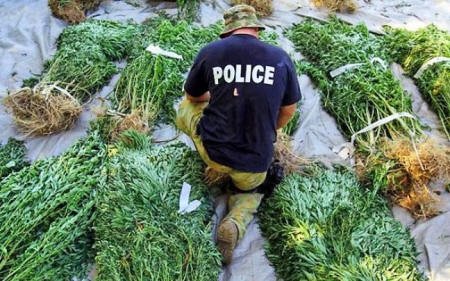|
Well, I'm not high nor do I get high, but let me tell you, there is a plant available right now and it is often mistaken for marijuana, but it has capabilities that are beyond what you could imagine.
It's called hemp...
The funny thing is, in the United States, hemp is just as illegal to grow as marijuana is.
In the past, hemp was used for many things:
In fact, it used to be mandatory in the
United States for farmers to grow hemp if they had the land. You can
find out even more about hemp
here.
How did this happen?
This then led them to take an obscure Mexican slang word - 'marihuana' - and push it into the consciousness of America.
The reason why they changed the name was
because everyone knew of hemp and how amazing it was for the world.
They would never be able to get away with banning hemp, so they used
a name they knew no one would recognize.
Yellow journalism is essentially journalism where stories with catchy headlines are put into the mainstream media to get attention, yet these stories are not well researched or backed up. They are often used simply to sway public opinion. Many newspapers were pumping stories emphasizing the horrors and dangers of marihuana.
The "menace" of marihuana made headlines everywhere.
Readers learned that it was responsible
for everything from car accidents to looser morals, and it wasn't
long before public opinion started to shape.
...which were all propaganda films designed by these industrialists to create an enemy out of marihuana.
Reefer Madness was possibly the
most interesting of the films, as it depicted a man going crazy from
smoking marijuana and then murdering his family with an axe. With
all of these films, the goal was to gain public support so that
anti-marihuana laws could be passed without objection.
More vicious, more deadly even than
these soul-destroying drugs (heroin, cocaine), is the menace of
marihuana!
In the 1930s, things were different from today in significant ways.
The population did not question authority or the media to the extent that we do now, and they did not have tools like the Internet to quickly spread information and learn about things that were happening.
Most built their opinions and beliefs off of the news via print, radio, or cinema. As a result (and thanks to the explicit instruction of mainstream news), many people did tell their children about marihuana.
Thus, public opinion about this plant
was formed...
At the time, the Chairman of the Ways
and Means was Robert Doughton, who was a
Dupont supporter. With vested
interest, he insured that the bill would pass in Congress.
Since the law was not focused on banning one or the other, both found their way into the ban. The AMA recognized cannabis/marihuana as a medicine found in numerous healing products sold that had been used for quite some time.
The AMA, like many others, did not
realize that the deadly menace they had been reading about in the
media was in fact hemp.
What was arguably the most useful plant known to man at the time, at least in the West, became illegal to grow and use:
To this day, this plant is still illegal
to grow in the United States.
But it should also be mentioned that cannabis has been abused over the years and does have its negative side effects.
This is a reality many in the community
don't want to admit but it has to be said. We know the effects it
has on regular users under 25 years old as well as what heavy
regular use can do to serotonin levels. [1]
Despite the awareness that exists about
hemp as an option to transform how things can be done on this
planet, governments continue to ban this plant, and it
is still often mistaken for marihuana due to their similar
appearance.
This helps to work out the difference
between fact and fiction so we can use the plant responsibly while
taking advantage of its benefits.
|


